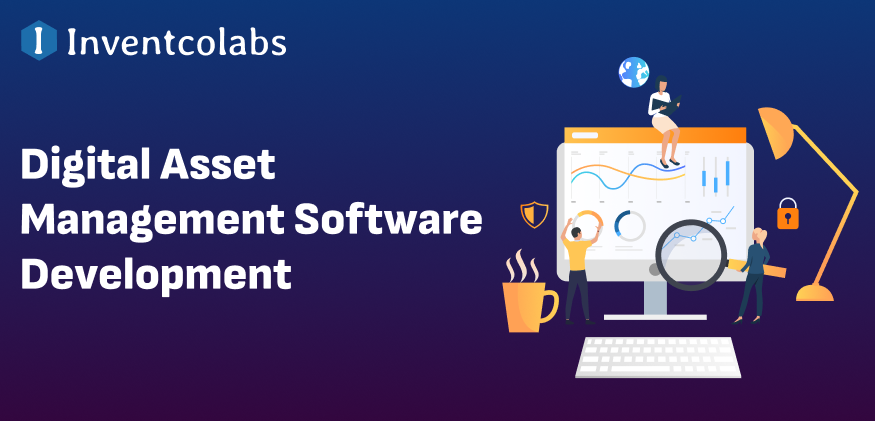It is well known that waste is produced on our planet in large quantities. Population growth is the leading cause of the development of this trash. Although there are no technological means of population control other than those involving knowledge and legislation, the output of rubbish can be managed. Our system integrates a wide range of techniques for waste management. One benefit of this is keeping our planet clean and safe from all kinds of disasters.
However, in recent years, the traditional approaches to trash collection have become increasingly more costly and efficient. Therefore, we need clever Waste Management Software Development to solve our system’s problems. These ideas have changed how the e-waste is managed, making it a more dynamic and healthful process.
What is Waste management?
Organizations utilize a waste management system, which is a streamlined process, to dispose of waste, reuse trash, minimize waste, and prevent waste from occurring. Under this approach, also called trash disposal, companies implement all-encompassing plans to efficiently handle e-waste from the point of origin to the point of disposal.
Key Features of Waste Management Software Development
Users using the best waste management software can benefit from the newest features and capabilities. This allows the domain to automate and streamline many repetitive processes. Several essential app functions for smart waste management software include the following:
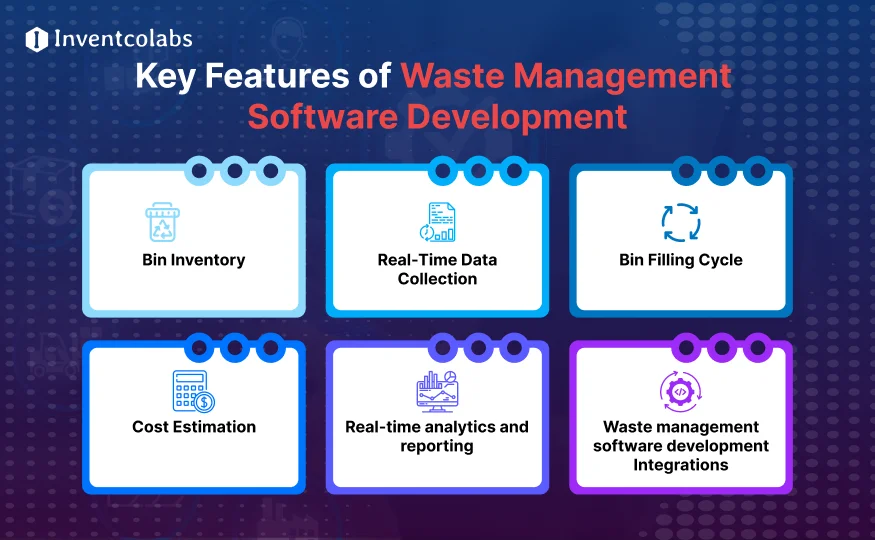
Bin Inventory:
It helps customers examine and monitor bins spread across multiple sites. The trash cans on the map are visible to every user. Additionally, they have access to details about the bin, like its size, the kind of waste it can accommodate, location, quantity of waste it holds, and collection schedules.
Real-Time Data Collection:
With the aid of these sensors, users can obtain real-time data from the bin. Otherwise, it will be possible to ascertain whether the trash can is empty or loaded. The ability for users to predict when the garbage can will be filled with trash is an additional advantage. Their awareness of the last time the trash was collected will be the ultimate result. Consequently, intelligent waste management software helps remove the chance of trash overflow.
Bin Filling Cycle:
This feature let users understand how to fill the trash bin. Furthermore, it gives consumers access to serving graphs that indicate the best time to retrieve waste from the can. It thereby lowers the time and cost associated with collection.
Cost Estimation:
The cost of waste management app development for the provided service can be ascertained. Some waste management app utilize factors to calculate the overall cost of waste collection. Costs can be determined based on the automobiles, bins, depots, and discharges.
Real-time analytics and reporting:
Any issues or worries that residents discover in the garbage can be reported. The people can upload pictures of the bins and their location here. This allows the service providers to address the problem more rapidly.
Waste management software development Integrations:
Integrating popular solutions such as electronic ticketing, invoicing and accounting, route optimization, third-party labor management, and others into a unified system can enhance customer engagement, optimize waste management practices, and improve service delivery.
API’s Integration for Waste Management
For businesses handling residential, commercial, and roll-off waste, integrating industry-leading waste management system software is developed to handle trash logistics, create work orders, monitor employees and drivers, compute truck weights, and much more.
Integration of Route Optimization Tools and APIs for Waste Management
You can incorporate popular geolocation application programming interfaces (APIs) to let your fleet drivers take the most effective routes to maximize operational efficiency. The telematics systems can also be integrated into waste-tracking apps for dispatching and real-time communication.
Applications for Route Optimization
The user can also integrate intelligent billing and accounting solutions with your current back-office systems to provide total insight and control over your waste-hauling business expenses, bills, statements, and electronic payments. These instruments have dashboard features that are easy to use.
Scale management and landfill software
You can incorporate waste management business software for handling MRF scales, transfer stations, and landfills to facilitate the organization’s growth. Multi-dimensional code tables for improved reporting, user-friendly search engines, and integrated ticket input processes are used to achieve this.
Benefits of Waste Management Software Development
Here are some of the key benefits related to waste management software development: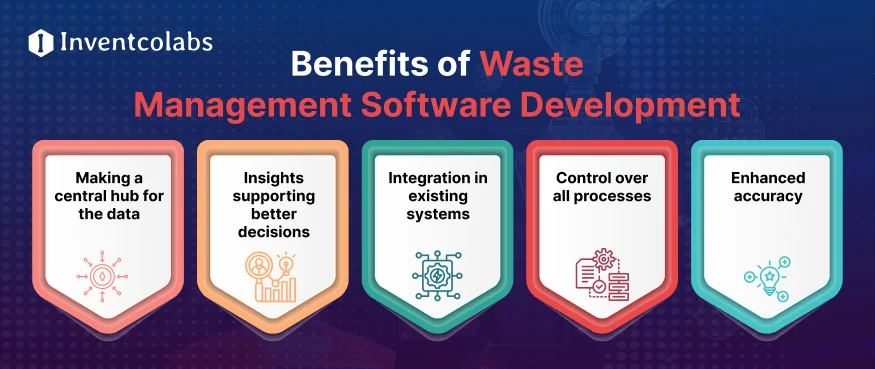
Making a central hub for the data:
You may not know where your data is located if you are running many systems, if you have waste management firms operating anywhere from five to twelve separate systems. You are likely unaware of the information you are missing. You may not even be aware of it, but your productivity and efficiency may be lacking significantly.
A central waste management software development company will help you to gather all of the data from your firm, giving you a dependable primary source for business operations. It will also spare you the time and energy that would have been required to gather and organize all of that data!
Insights supporting better decisions
You can analyze the data you have collected in one place to identify areas within your organization that want improvement. Software that can convert analytics and data into actual business insight is essential for trash management.
With these crucial insights, you can make well-informed decisions, understand how those actions will impact your organization, and support a strategic business plan.
Integration in existing systems
Organizations that handle garbage frequently worry about the possible disruption that a new system can cause. Stated differently, it is among the leading causes of any business’s delays when deciding which new technology to invest in.
However, how would it feel to know that a new system could work with the ones you already have or that commissioning would go smoothly and not interfere with your business? This is a real option, thanks to the most sophisticated waste management software now on the market.
Control over all processes
It is obvious that monitoring activities across the entire organization is one of the biggest problems waste management software companies face. This is particularly true for companies with complex operations or operating in several locations.
You need to know exactly how to integrate and streamline your processes to get outstanding control. Higher production levels are encouraged because they help to improve margins.
Enhanced accuracy
Whether you like it or not, reporting on waste management will become an increasingly important obligation for your business. To comply with the new waste disposal and management requirements that governments are establishing, you must demonstrate how you handle the waste you gather.
Additionally, your clients may ask you for reports to satisfy their demands. You need to use the most modern waste management software to get the information and precision you need in your reporting.
Waste Management Software Development – A Step-by-step Process
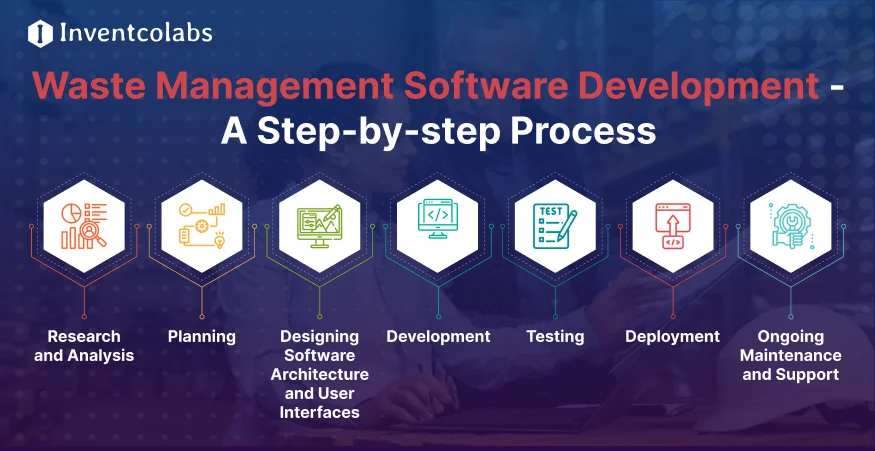
Research and Analysis:
The initial waste management software development step involves comprehensive research and analysis. This phase focuses on understanding the client’s requirements, existing waste management practices, and relevant regulatory frameworks. The development team establishes the groundwork for creating a tailored solution by gaining insights into these aspects.
Planning:
Following the research phase, the planning stage is crucial for defining the project scope, setting clear goals, and establishing a realistic timeline. This step ensures that all stakeholders are aligned on the objectives of the software development process, laying the foundation for a successful project.
Designing Software Architecture and User Interfaces:
The software’s architecture and user interfaces are meticulously designed in this phase. Developers create a blueprint that outlines the system’s structure, ensuring scalability and efficiency. Simultaneously, intuitive user interfaces are designed to enhance the overall user experience.
Development:
The actual development of the waste management software takes place in this phase. Utilizing programming languages and frameworks like Laravel for the backend and React or Angular for the front end, developers bring the design to life. Integration with databases and third-party systems may also occur during this stage. Always hire dedicated developers from the respective fields to build these apps.
Testing:
The testing phase is critical to ensuring the software’s functionality, performance, and security. Quality assurance teams conduct various tests, including unit testing, integration testing, and user acceptance testing, to identify and rectify any issues before the software moves to the deployment stage.
Deployment:
The software is deployed upon successful testing, making it available. This phase involves transitioning the software from development environments to production, ensuring a seamless and efficient deployment process.
Ongoing Maintenance and Support:
Even after deployment, the journey continues with ongoing maintenance and support. Regular updates, security patches, and addressing evolving requirements are essential to optimize waste management software and align with changing needs. Effective communication and collaboration are maintained to facilitate continuous improvement. You can opt for custom web app development services for building the software as per your requirements.
Business Model of Waste Management Software Development
First, look at waste management organizations’ corporate structure. 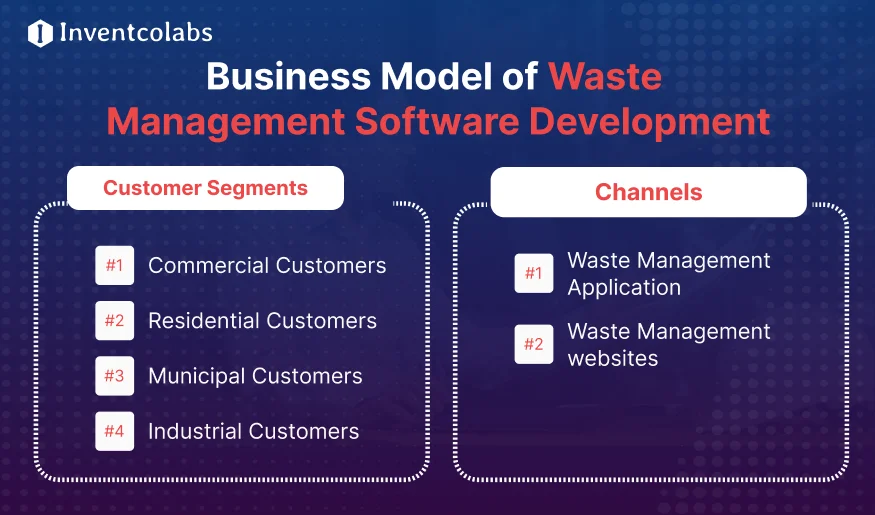
Customer Segments
Trash management provides a wide range of customers with specialized app for waste disposal and management of garbage. These are the many types of customers that you can have:
- Commercial Customers- It encompasses commercial operations in various industries, including those where the brands provide the most superior services, such as recycling electronic devices and providing security.
- Residential Customers- The company provides services to residential tenants and homeowners, such as curbside pickup, dumpster collection, and portable storage, and it includes both types of customers.
- Municipal Customers- Local government and municipal bodies, as well as public organizations, are included in its composition.
- Industrial Customers –A wide variety of industrial businesses, such as manufacturers, construction companies, food service providers, and healthcare providers, are included in this category.
Channels
- Waste Management Application-Additionally, mobile app for waste management make it simpler for consumers to manage their payments, obtain information about their accounts, and monitor pickup schedules.
- Waste Management websites- The websites that deal with trash management include information on a wide variety of one-of-a-kind solutions and services, facility areas, and sustainable activities. The consumers request both pickups and services once they have checked the availability of the service in their location.
Explore more: Top Reasons To Have A Mobile App For Your Business
What is the Cost Associated with Building a Waste Management Software?
The cost associated with developing a waste management software solution can fluctuate significantly, depending upon various factors. These factors encompass the complexity of the software, the specific features and functionalities needed, the chosen technology stack, and the rates of the development team. As a general approximation: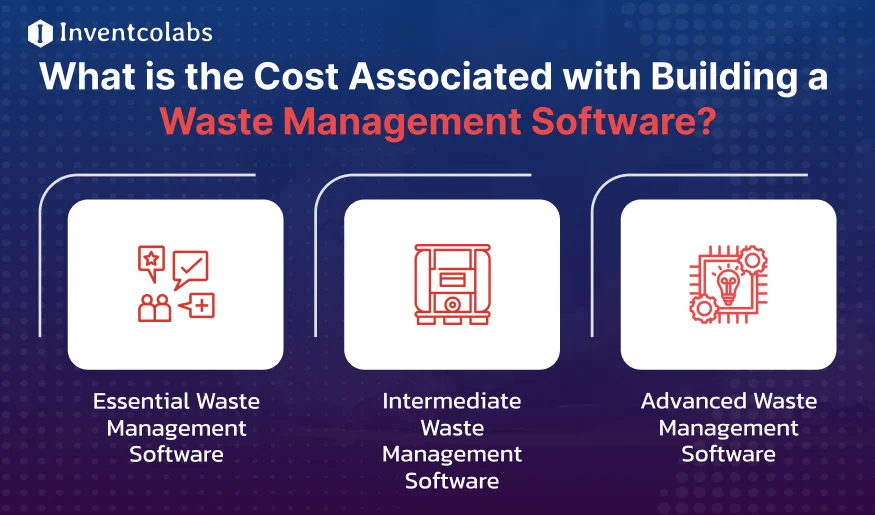
Essential Waste Management Software:
- Cost Range: $50,000 to $80,000
- Includes crucial features like user interfaces, waste tracking, and basic reporting.
Intermediate Waste Management Software:
- Cost Range: $80,000 to $200,000
- Adds more advanced features such as real-time monitoring, analytics, and integration with other systems.
Advanced Waste Management Software:
- Cost Range: $200,000 and above
- Includes sophisticated features like IoT integration, predictive analytics, mobile applications, and extensive customization options.
It’s crucial to note that these are rough estimates, and the actual cost can vary based on your specific requirements and the development approach. Consulting with a software development team or firm will provide a more accurate estimate tailored to your project’s needs. Additionally, the overall budget should consider ongoing maintenance and support costs.
Conclusion
Creating a waste management app design for conventional and electronic waste is a commitment to efficient and sustainable recycling practices. From initial research and planning to meticulous design and development, each step is geared towards optimizing waste management. Thorough testing ensures reliability, and deployment marks a milestone in making the software accessible. Ongoing maintenance reflects a dedication to keeping the software current and secure.
This comprehensive approach streamlines recycling operations, contributing to responsible waste disposal practices and environmental conservation. The smart waste management apps are committed to sustainable development and a greener future.
FAQs
Q. What inspired the need for waste management software development?
ANS. The inspiration stems from the growing challenges in effective conventional and electronic waste management. This software aims to provide a comprehensive solution to streamline recycling processes.
Q. How does the research phase contribute to the success of waste management software?
ANS. The research phase is crucial for understanding client requirements, existing waste management practices, and regulatory frameworks. It sets the foundation for creating a customized solution that aligns with specific needs and industry standards.
Q. What key factors are considered during the planning stage of software development?
ANS. The planning stage defines the project scope, establishes clear goals, and sets a realistic timeline. It ensures alignment among stakeholders, fostering a clear understanding of the project’s objectives.
Q. Why are software architecture and user interface design emphasized in waste management software development?
ANS. Designing the architecture ensures scalability and efficiency, while user interface design enhances the overall user experience. Both elements are essential for creating functional and user-friendly waste management software.



